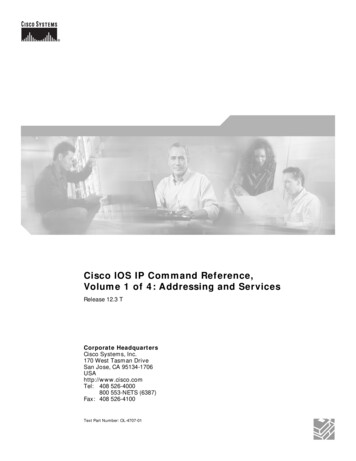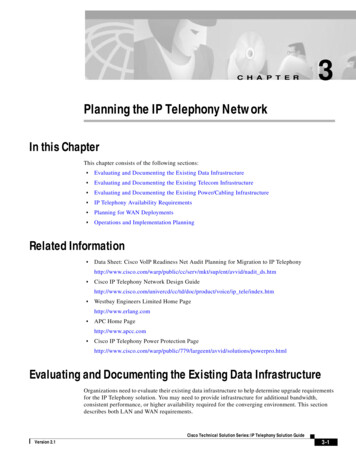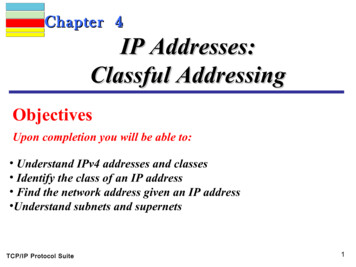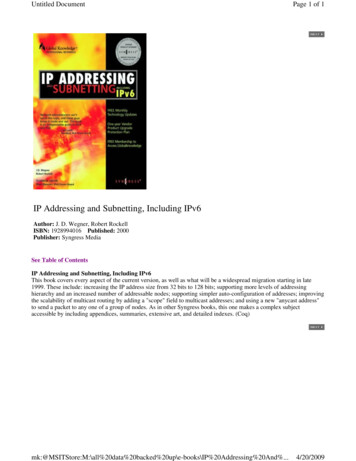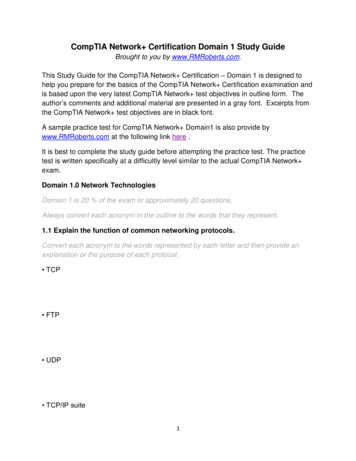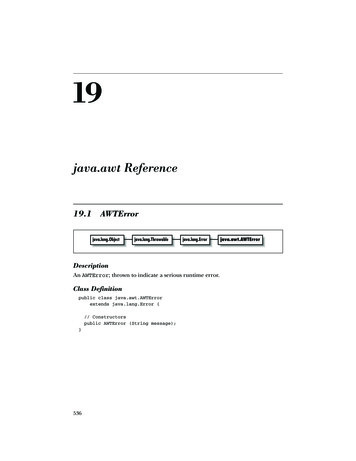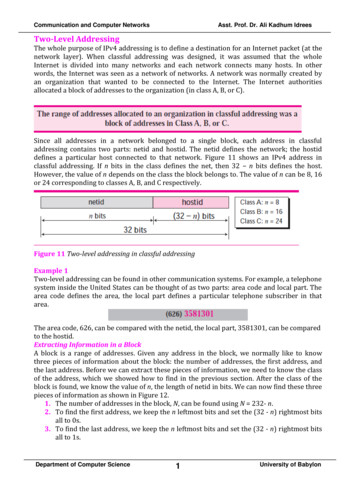
Transcription
SPOTLIGHT PAPERSponsored by: FujitsuOrder management solutions can help address the customer experience gap bydelivering the right product at the right time and at the right price to the right location.Order Management Solutions:Addressing the Customer Experience Gap inDigital CommerceNovember 2021Written by: Stefanie Naujoks, Research Director, IDC Manufacturing Insights EuropeIntroductionMany organizations are rethinking how they do business with customersas the pandemic winds down. At the height of the disruption, lockdownsforced physical sales channels such as showrooms to close, trade fairs werecancelled, and social distancing measures made in-person customer visitsimpossible. As a result, businesses shifted to digital sales channels as acomplement to traditional sales channels.AT A GLANCEKEY TAKEAWAYSOrder management solutions can helporganizations bridge the potential customerexperience gap by enabling visibility acrossdistributed inventories and managingseamless and cost-efficient order fulfillmentacross multiple sales channels.In retail, digital sales channels had achieved a degree of maturity beforethe pandemic. However, digital commerce currently represents a smallershare of transactions in manufacturing than in retail, particularly among industrial B2B organizations.This is changing. Investment in B2B commerce is being spurred by several factors: electronic data interchange (EDI)creating a bottleneck for placing orders, B2B customers expecting purchasing experiences that mirror the ease of theironline consumer shopping experience, and robust technologies enabling digitally augmented product showcasing.Many manufacturers are also turning to direct-to-consumer (D2C) strategies as a way to improve direct customerengagements to increase customer loyalty, launch new business models such as subscription services, or gain valuablecustomer insights data from various touch points in the customer journey. This trend will also drive investments in digitalcommerce accordingly.Standing up digital commerce typically includes the implementation of front-end solutions, such as a web shop, customerregistration and profiles, product catalog management, or self-service customer services. Moreover, it will also be key atthe back end to ensure a seamless and satisfactory experience throughout the customer journey, from placing an orderto tracking its arrival at the expected time and the most convenient delivery location.
SPOTLIGHT PAPEROrder Management Solutions: Addressing the Customer Experience Gap in Digital CommerceTo ensure high levels of customer experience across the entire journey while optimizing order fulfillment costs, digitalcommerce solutions need to align with supply chain operations, warehouse operations, and order fulfillment.Achieving this outcome typically requires not only appropriate back-end integration with existing applications (e.g., ERP,PIM, CPQ, SCM, and CRM) but also investments in solutions to address any potential gap between the customer'sexperience and order fulfillment from digital commerce.Order management (OM) solutions can help organizations bridge this potential customer experience gap by enablingvisibility across distributed inventories and managing seamless and cost-efficient order fulfillment across multiplesales channels.DefinitionsIDC defines order management as follows: Order management applications are designed to improve order efficiency andvisibility for a wide range of industries and order types. Order management functions include order validation, quoting,planning, life-cycle management, fulfillment, and settlement.Order placement is the prerequisite for an order management application, followed by the issuance of receipts,advanced shipping notices, and payment processing functions. With an order management system in place, order andproduct configurations, pricing options, shipping preference verification, and credit checking can be combined to form anintegrated order management application, regardless of the sales ch
supply chain management was on efficiency; today, this focus has shifted to resiliency. Responding to changing . guiding principle, including cost-efficient order routing and enabling order fulfillment from multiple fulfillment centers. Intelligent order routing and multi-shipping order fulfillment that follow business rules and priorities can



